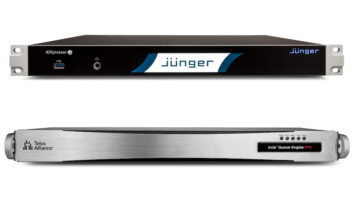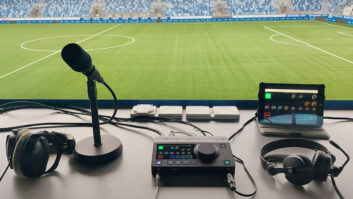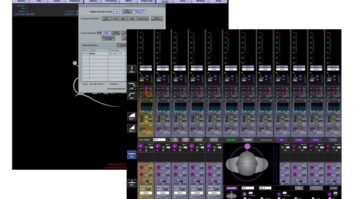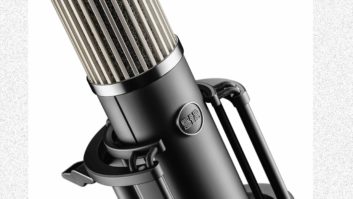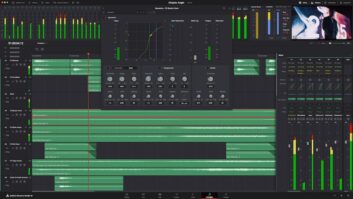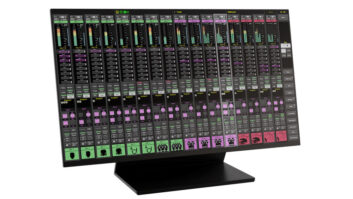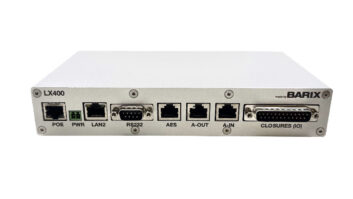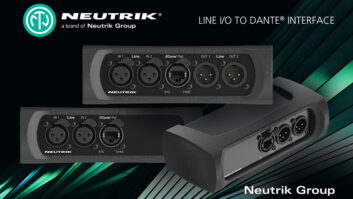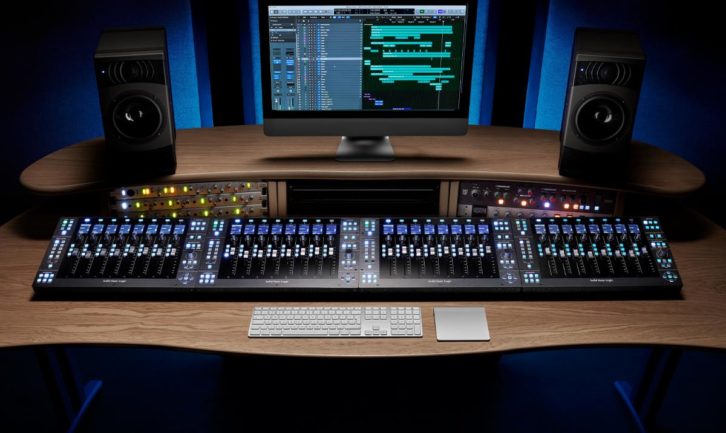
Solid State Logic UF8 Advanced Studio DAW Controller
The new Solid State Logic UF8 controller delivers a new level of user-focused design, including insightful displays, intelligent fader and control access and function, multiple stand angles for user-defined placement, and a production workflow-enhancing control layout. Expandable to a 32-channel control surface with integration for all major DAW platforms, UF8 is designed for music creation, production and mixing, post production and webcasting. The new SSL 360° control software manages multi-controller configurations, customized user keys and DAW switching across multiple layers. Features include 100 mm touch sensitive faders, eight endless rotary encoders, intelligent multi-purpose Channel encoder , and integration with all major DAWs.
Electro-Voice EVOLVE 50M
Electro-Voice has unveiled the newest member of the EVOLVE line of portable column P.A. loudspeakers, the EVOLVE 50M. Taking its place as the largest speaker in the EVOLVE series, the EVOLVE 50M employs a 12-inch woofer and eight Neodymium 3.5-inch mid/HF drivers to produce a frequency response of 43 Hz to 20 kHz (–3 dB down). Power for the entire complement of drivers is supplied by an internal Class D amplifier capable of running the EVOLVE 50M to SPLs of 127 dB.
The 3.5-inch drivers used in the EVOLVE 50M are mounted on proprietary waveguides that create a coverage angle of 120 degrees horizontal x 40 degrees vertical (asymmetric). The J-shaped array directs acoustic output to both seated and standing audience members, and is supported atop the woofer module using a custom-designed pole mount that incorporates internal wiring to carry audio connections from the amplifier to the 3.5-inch drivers (with a redundant connection). The pole magnetically latches to the array and the base for secure mounting.
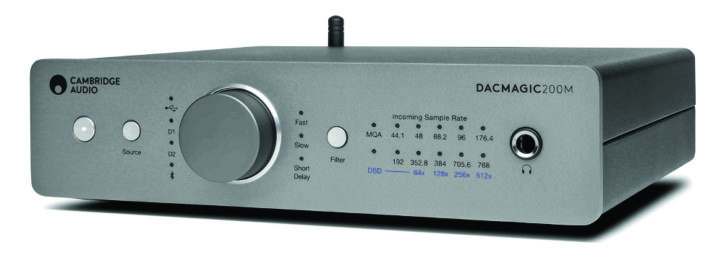
Cambridge Audio DacMagic 200M
The DacMagic 200M is the new top-of-the-range DAC (digital-to-analog converter) and headphone amplifier from Cambridge Audio. Now with native MQA support, integrated Bluetooth, a more powerful headphone output and superior DAC technology, the DacMagic 200M improves the sonic performance from your favorite digital devices.
The DacMagic 200M has been designed for digital audio from the ground up, ensuring your digital music performs perfectly regardless of its source. Dual ESS Sabre DACs are at the heart of the DacMagic 200M. A step up from the previous generation DacMagic Plus, the new high-quality DACs can handle PCM and DSD signal inputs at a higher resolution than before—up to 32-bit/768 kHz (PCM) and DSD512 natively. All digital files—whether it’s on a CD, streamed from your smartphone, or stored on your laptop—are converted to analog audio with all of its detail and dynamics intact through the DacMagic 200M. Switchable digital filters on the DacMagic 200M offer greater flexibility and control over your listening experience. These three pre-set filters help reduce noise generated by the digital-to- analog conversion process, with each filter offering a different sonic option depending on the source material.
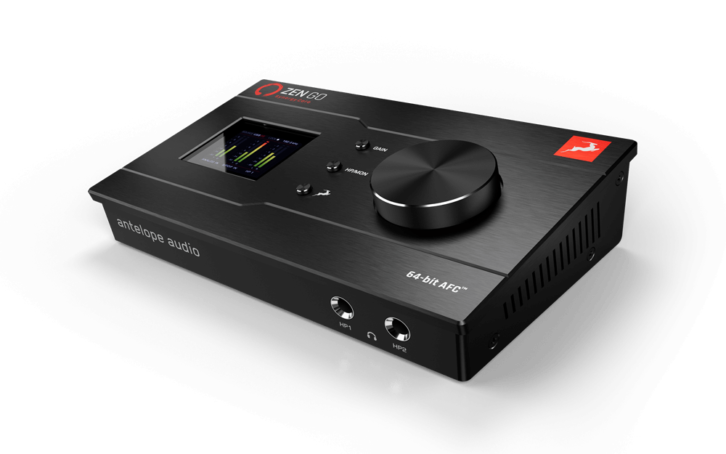
Antelope Audio Zen Go Synergy Core
Antelope Audio interfaces are known for their excellent audio quality—thanks to impressive clocking and converters—as well as for their low-latency, DSP-based monitoring and proprietary Synergy Core effects. The company’s latest product is the Zen Go Synergy Core ($499), which is its first bus-powered interface (USB-C, Mac/Win) and is also its most compact and affordable. At 7.8 (W) x 4.6 (W) x 2.3 (H) inches, and weighing all of 1.5 pounds., it is highly portable.
The Zen Go sports two preamps on combo jacks that each offer 65 dB of gain and can handle mic, line and Hi-Z inputs. It also features RCA S/PDIF expansion jacks that can give you another 2 in and 2 out when connected to a compatible device. You get two pairs of monitor outputs, one on 1/4-inch TRS jacks and the other on RCA connectors. The unit also has two headphone outputs on the front panel with individual, software-based gain controls.
The Zen Go includes two USB-C jacks, one for connecting to your computer and one for “reverse charging,” which means it can power another USB-C device at the same time you’re using the interface. The Zen Go also comes with a USB-C cable, so it’s ready to go out of the box (after you install the control software, of course).

Radial Guitar/Amp Signal Switching Stations
Radial Engineering has updated two professional guitar/amp signal managing switching stations with the introduction of new models—the JX44 V2 and JX42 V2. The JX44 V2 is a single rack space 4-Instrument, 4-Amp and EFX Signal Manager, while the JX42 V2 is a single rack space 4-Instrument, 2-Amp Switching Station. Both units are intended to provide signal changeovers in a guitar, bass or keyboard rig without noise or popping when switching instruments. Both units enable simultaneous connection and activation of up to four instruments or wireless receivers, with all inactive inputs automatically feeding a buffered Tuner output.
The JX44 V2 also functions as a guitar, amp and EFX signal manager, handling effects routing requirements, providing connections for a local stereo EFX loop and the ability to assign and remotely control individual EFX channels to any amplifier for wet/dry/wet setups. The unit sports Class A signal buffers on the inputs, accessible on either the front or back panel.

Celestion Software Update for SpeakerMix Pro Plug-in
Celestion has released Version 1.1.0 Software Update for its SpeakerMix Pro, the professional studio-grade DAW plug-in dedicated to bringing high levels of detail and realism to guitar and bass speaker tone. The new V 1.1.0 Software Update includes a number of key feature upgrades and fixes, as well as new functionality, including:
- Users can enjoy up to seven days offline use before a login is required. If you have an internet connection during the seven-day cycle, everything happens in the background and you won’t need to enter your credentials again. No more logging in every 48 hours.
- Various fixes have been applied including those related to SpeakerMix Pro’s operation within some DAW packages, including fixes for crashes, window re-sizing issues and correction of visual glitches.
- New “Logout” and “Refresh” buttons. The “Logout” button clears the locally stored encrypted user credentials, so users can feel safe leaving a session computer after using an account. The “Refresh” button will refresh all of your DSR licenses.
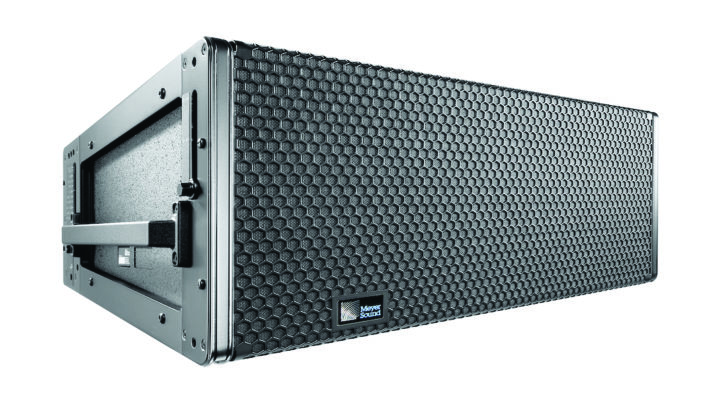
Meyer Sound Leopard-M80 Loudspeaker
Meyer Sound has unveiled its new Leopard-M80 narrow coverage linear line array. Leopard-M80 is identical to the existing Leopard design except that it provides an 80-degree horizontal pattern instead of the 110-degree coverage of the original model. Because the vertical coverage and rigging hardware are identical to the original Leopard, the new Leopard-M80 can be configured in mixed arrays of both loudspeaker variants; the company suggests using Leopard-M80 loudspeakers in the upper array section to provide focused long-throw coverage while Leopard loudspeakers below spread horizontal coverage for closer seating sections. Arrays configured with only Leopard-M80 loudspeakers can offer a long throw with reduced spill to the sides of the array, aiding use in narrow venues with reflective side walls, as well as in outdoor applications where side spill into adjacent areas must be minimized to conform to noise regulations.
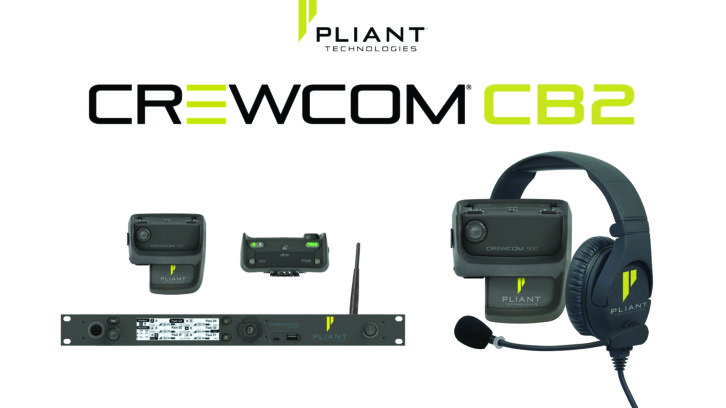
Pliant Technologies CrewCom CB2 Professional Intercom
The latest member of Pliant Technologies’ CrewCom family, the new full-duplex, install-friendly and feature-packed CrewCom CB2 is designed for small to mid-level applications requiring a reliable, great sounding wireless intercom with excellent RF coverage and range.
Available in both 900 MHz and 2.4 GHz frequency options, as well as 900 MHz Oceania and 2.4G Hz CE compliant models, the system includes the CrewCom CB2 basestation and up to six CRP-12 two-channel radio packs to create a powerful but economical wireless intercom system. This latest solution from Pliant provides customers with two intercom channels as well as interconnectivity to all industry standard two- and four-wire intercom systems.
Two CB2 basestations can be connected and the audio synced to create one system with up to 12 full-duplex users. Two separate CB2 systems can also be synced to ensure RF performance if they need to be co-located in the same RF area. The CB2 can also sync and be co-located in the same coverage area as an existing CrewCom system.
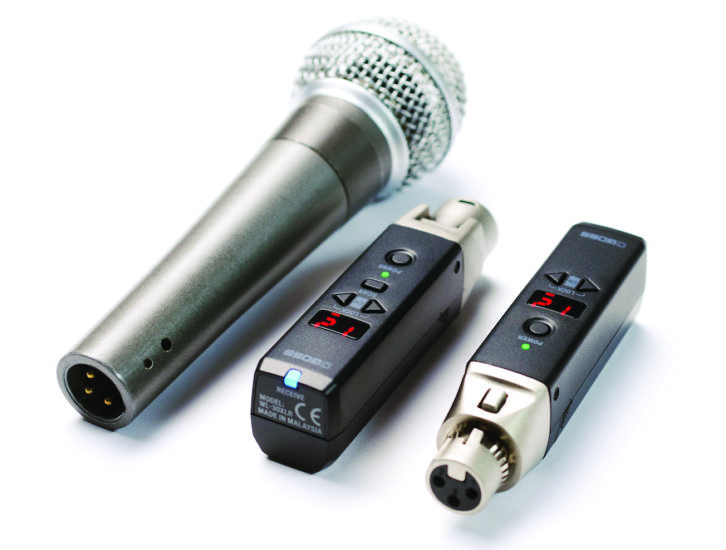
Boss WL-30XLR Wireless System
Boss has introduced its new WL-30XLR wireless system for XLR dynamic microphones. The entry level system is intended to simplify the adoption of wireless mics for non-technical users such as singers, speakers, DJs, MCs, video producers and others. The WL-30XLR system consists of a streamlined transmitter that connects to nearly any standard XLR dynamic mic and a compact receiver that plugs into an XLR mic input on a mixer, stage amp or other audio destination. The system’s processing reportedly provides ultra-low latency, plus strong line-of-sight transmission up to 230 feet/70 meters.
The WL-30XLR’s receiver and transmitter each use a single AA alkaline battery, which provides up to 11 hours runtime to cover multiple gigs and rehearsals. The Boss WL-30XLR wireless system is available now for $299.99.
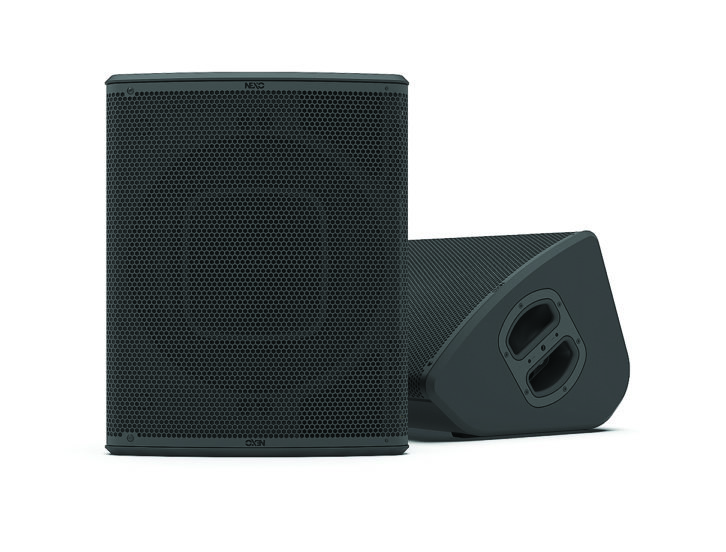
NEXO P15 Loudspeaker
NEXO’s P15 Point Source Speaker is a full-range (57 Hz to 20 kHz) speaker utilizing a custom-built driver with a 15-inch Neodymium low-frequency transducer and a 3-inch high-frequency transducer arranged in a coaxial configuration. The curvilinear cabinet—which measures 23.6 H x 19.0 W x 13.9 D inches—is constructed from birch/poplar plywood and can be deployed vertically or horizontally. The touring version of the P15 features a steel grille that can be removed easily without tools. High-frequency dispersion is set at the factory to 60 x 60 degrees, but can be changed to 90 x 40 degrees or 60~100×40 degrees (Asymmetrical) using magnetic, rotatable flanges.
The Touring P15 has top and bottom handles with rigging points, hidden pole mounts, and NL4 connectors, plus dual NL4 connectors on the rear panel. A recessed rear-panel switch enables the P15 to be run in two-way “passive” or two-way “active” modes; the latter increases the maximum SPL from 139 dB to 141 dB.
The Installation version is passive-only and has a cable gland with a two-core cable for audio input while ensuring IP54 protection from the elements when installed outdoors. The P15 has a nominal impedance of 8Ω and weighs in at 51 pounds.
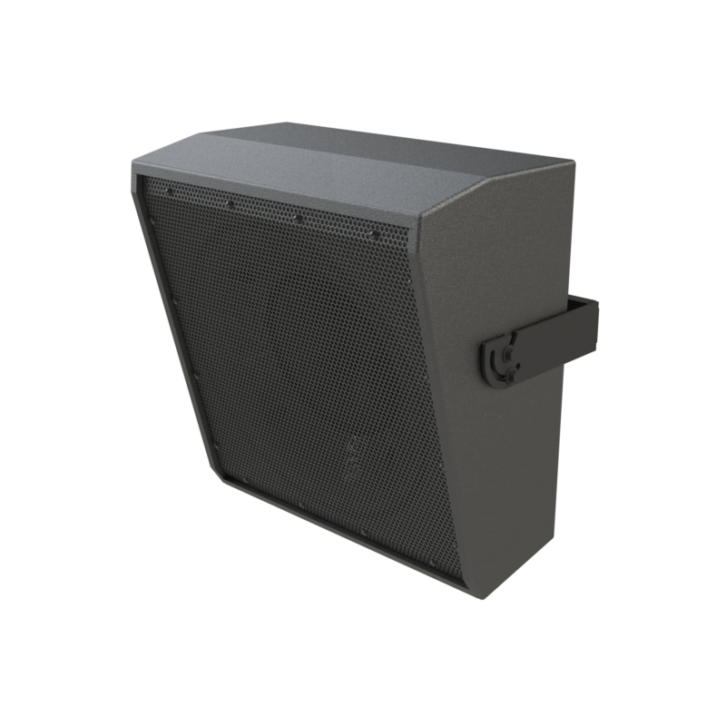
Danley SM90 Loudspeaker
Danley Sound Labs has expanded its SM Series of full-range loudspeakers with the addition of the SM90. Producing a frequency response of 63 Hz to 24 kHz (–3 dB) and a frequency range of 40 Hz to 30 kHz (–10 dB), the passive, two-way SM90 employs a coaxial 12-inch/one-inch driver capable of handling 300 watts of continuous power (1200 watts peak) for continuous SPLs of 120 dB and peak SPLs of up to 126 dB. The HF driver is protected from damage by Danley’s Sentinel Limiter circuitry, which reduces input level to a safe operating range when an overload condition is detected.
The SM90 also features Danley’s patented Synergy Horn technology, which facilitates construction of a full-range, point source loudspeaker that is phase accurate and provides consistent response across the entire coverage angle for increased musicality, intelligibility and impact.
Dimensions of the SM90 are 25.5 x 23.5 x 13.25 (inches) and it weighs in at 55 pounds. Cabinetry is constructed from 15mm Baltic birch with a polyurea coating; black or white finishes are standard, and custom colors are available.
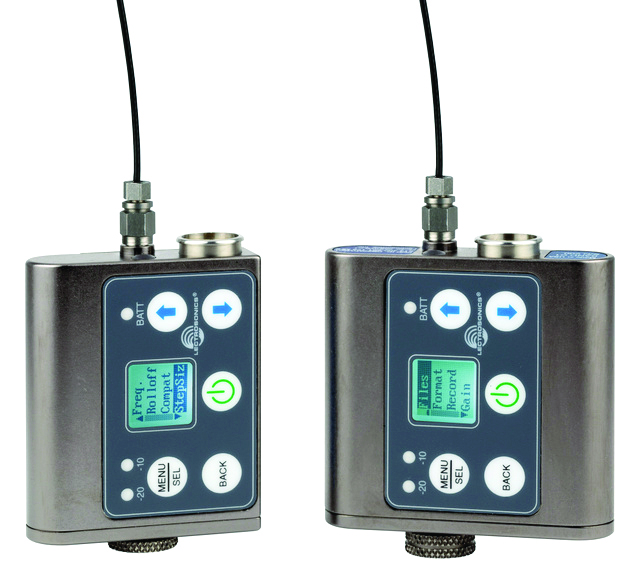
Lectrosonics Wideband Transmitters
Lectrosonics has unveiled two new transmitters in its Digital Hybrid Wireless SM Series product line—the SMWB/E07-941 (single AA battery) and SMDWB/E07-941 (dual AA battery), covering the Part-74 license-only frequency range from 941.525 to 959.825 MHz. The two new transmitters have the same dimensions and features as the earlier UHF SMWB and SMDWB units, including the ability to either act as a transmitter or as a body-worn recorder.
RF power for the two models is selectable at 100, 50 or 25 mW. They feature the standard TA5 connector with servo-bias mic input, as used on all previous SM Series units and all current TA5 beltpack units like the LT and LMb. Any lavaliere microphones wired for these other Lectrosonics transmitters will also work on these new models. Accessories for the existing SMWB/SMDWB series including pouches, belt clips and battery eliminators are fully compatible with the new models.
The new units can be configured either as a transmitter or a recorder, with files stored on Micro SD card memory, allowing use as body worn recorders. Audio files are recorded in the industry standard Broadcast Wave (.WAV) format at 24 bits, 44.1 kHz sample rate. The Micro SD memory card can also be used to update firmware in the field.
